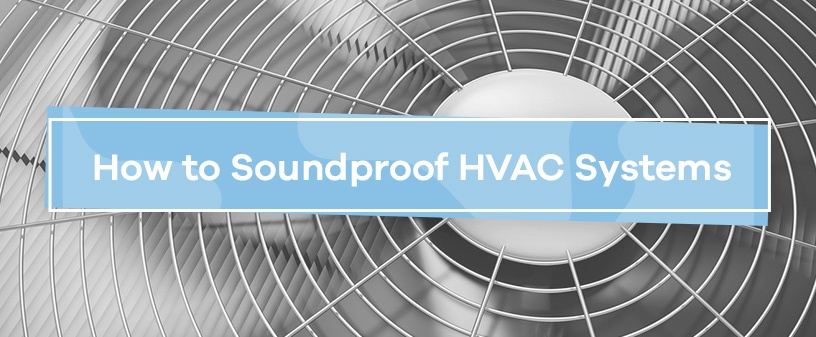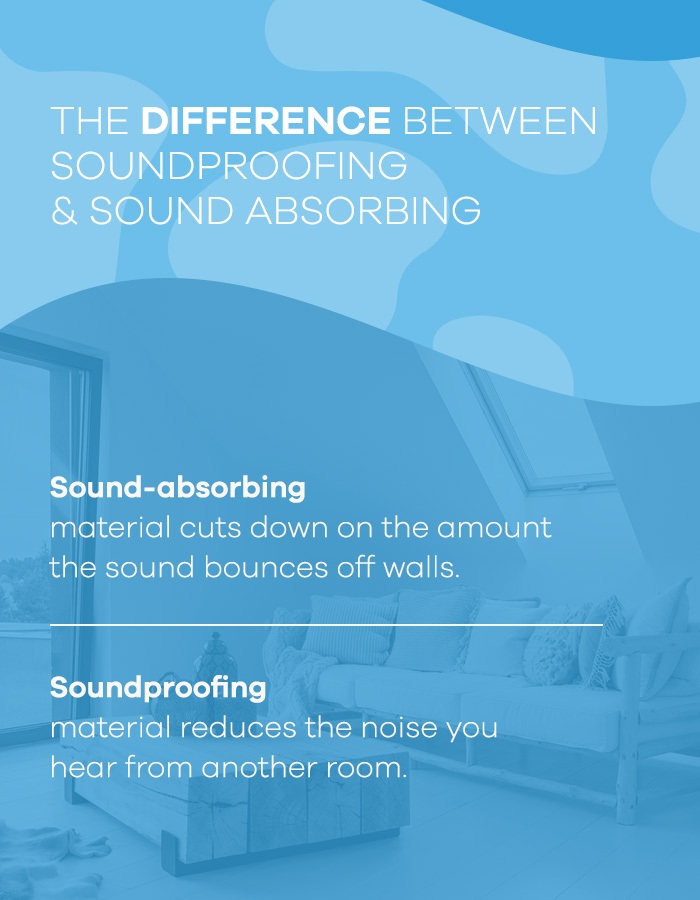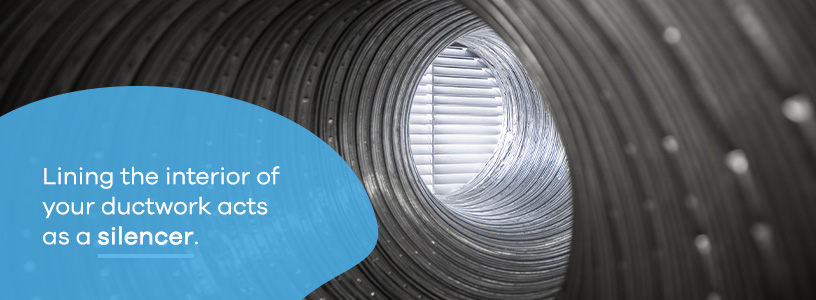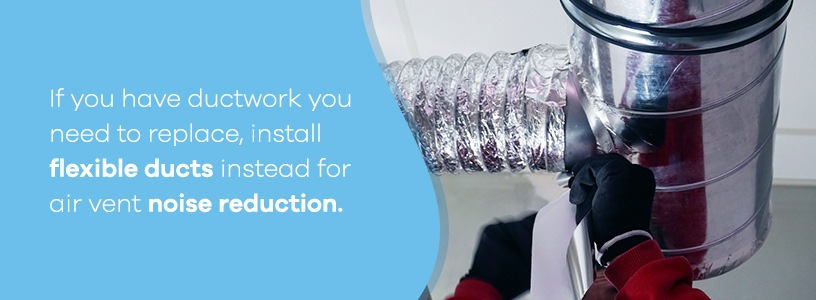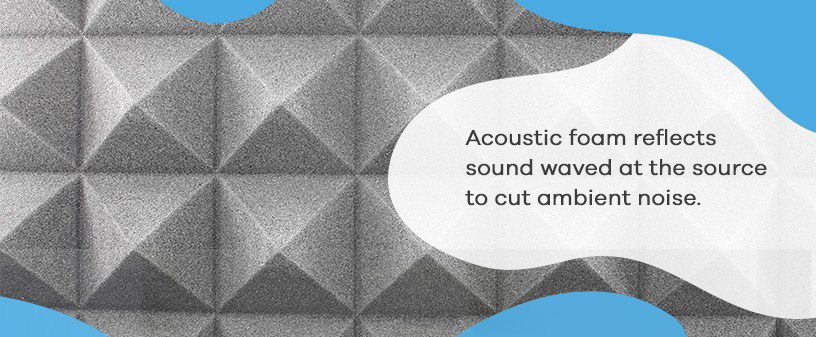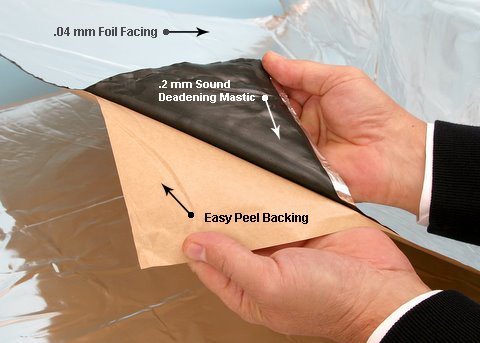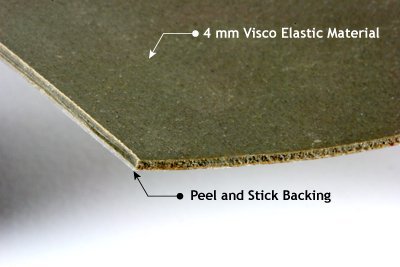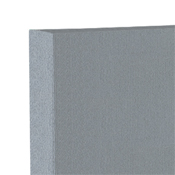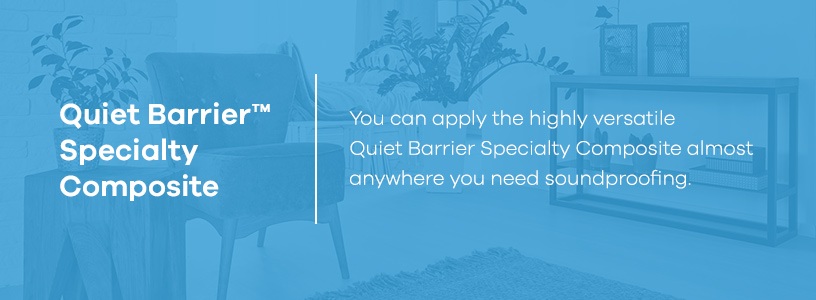

HVAC Noise Reduction
Soundproofing HVAC systems can be the most challenging because they involve ductwork buried deep in a home’s structure. Not only does the HVAC system create noise, it carries noise from one room to another. Its ductwork acts as a path sound travels along, creating a “highway” of noise traffic throughout your house.
Check out our materials and tips below for soundproofing your HVAC system.
 HVAC Soundproofing Products
HVAC Soundproofing Products

HVAC Soundproofing Products
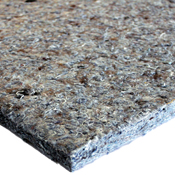
Echo Absorber™ Acoustic Panel (Natural Blend – 1″x2’x4′)
$29.99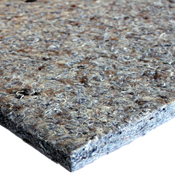
Echo Absorber™ Acoustic Panel (Natural Blend – 1″x4’x4′)
$45.99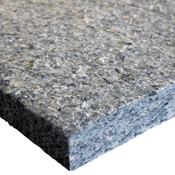
Echo Absorber™ Acoustic Panel (Natural Blend – 2″x2’x4′)
$40.99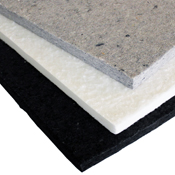
Echo Absorber™ Acoustic Panel 1″ (Case of 14)
$839.86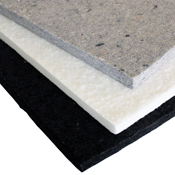
Echo Absorber™ Acoustic Panel 1″ (Case of 6)
$359.94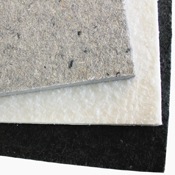
Echo Absorber™ Acoustic Panel 2″ (Case of 3)
$209.97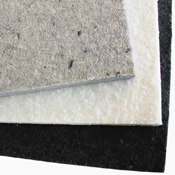
Echo Absorber™ Acoustic Panel 2″ (Case of 8)
$559.92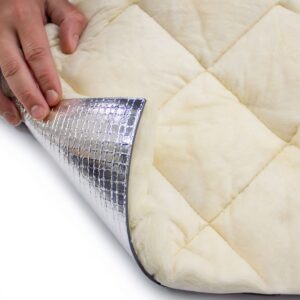
Quiet Barrier® Lag
$50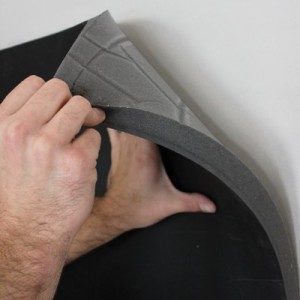
Quiet Barrier® HD Soundproofing Composite
$349.99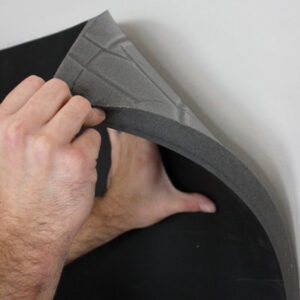
Quiet Barrier® HD Soundproofing Composite (w/PSA)
$434.99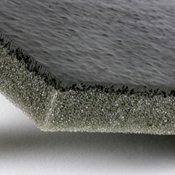
Quiet Barrier® LD Soundproofing Composite
$229.99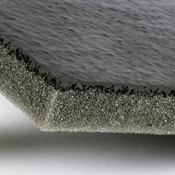
Quiet Barrier® LD Soundproofing Composite (w/PSA)
$279.99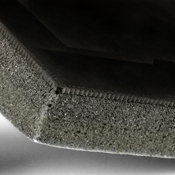
Quiet Barrier® MD Soundproofing Composite
$265.99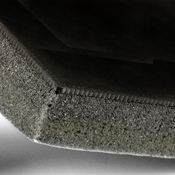
Quiet Barrier® MD Soundproofing Composite (w/PSA)
$325.99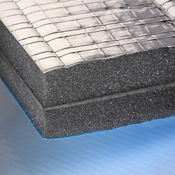
Quiet Barrier® Specialty Composite w/PSA
$209.99 $199.99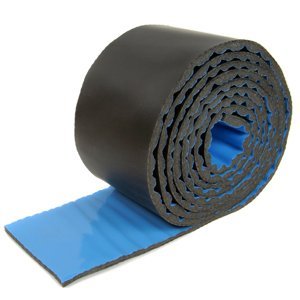
Quiet Wrap™ Pipe Soundproofing Wrap
$32.25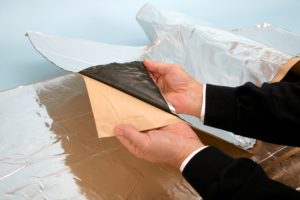
RoadBlockR Sound Deadening Material
$36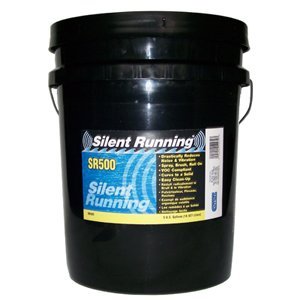
Silent Running Soundproof Coating (5 gallons)
$649.99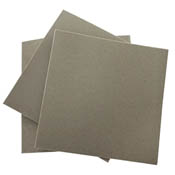
Vibra Block Sound Deadening Material (Pad)
$11.57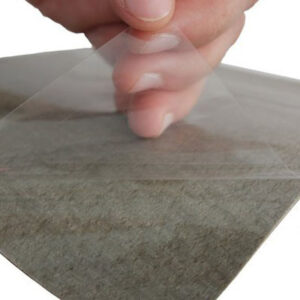
Vibra Block Sound Deadening Material (Sheet)
$399
Vibra Block Sound Deadening Material (Strip)
$58.47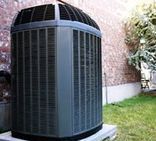 HVAC Soundproofing Methods
HVAC Soundproofing Methods
HVAC Soundproofing Recommended Methods
1. Reduce the Sound at Its Source
Applying a vibration-damping product, like Vibra Block® Sound Deadening Material, to the interior or exterior surface of the unit will help reduce the noise vibrations the system creates. These vibrations will be stopped at the source and unable to travel along the ductwork and throughout the house. Some of the benefits of this material include:
- It is a premium, industrial-grade sound-deadening material. Constructed from a high-performance vibration-dampening polymer, it offers excellent HVAC soundproofing. Its peel-and-place backing makes it easy to install.
- It’s well-suited for HVAC noise reduction. It dampens sound on any steel — including galvanized steel, stainless steel, plated steel and more.
- The material is insulative when applied to the ducts themselves. This quiets the noise caused by HVAC systems and reduces energy costs because it offers thermal protection.
If you’re looking to save money, you should also consider that Vibra Block® is an economical method of HVAC noise reduction. You would have to spray an entire surface with a standard sound-deadening spray to get as much sound reduction as covering only 60 percent of the surface with Vibra Block®.
2. Limit Ductwork Noise
Lining the interior of the ductwork with a sound absorber combats noise transmission. Choose fire-resistant products safe for heating units without releasing particles into the air stream.
Fabric-Wrapped Foam, like our Udderly Quiet™ range, is a popular HVAC noise-reduction product. It has high sound absorption and thermal insulation properties. Safe to use in ductwork, it is both flame and smoke-resistant. This foam is one of the older methods of soundproofing and insulating pipes.
3. Use a Soundproofing Wrap
A wrap is an effective alternative to foam. We recommend Quiet Wrap™ Pipe Soundproofing Wrap to reduce the noise from wastewater and drainage pipes. The wrap comprises an industrial-grade barrier/foam composite and high-density sound barrier membrane. The laminated barrier is ¼-inch of acoustic-grade polyurethane foam.
Quiet Wrap™ Pipe Soundproofing Wrap is perfectly suited to pipe noise reduction. It works on PVC water pipes or cast iron waste water pipes of any size, it wraps easily around your pipes with a peel-and-place adhesive backing, and its foam component isolates the barrier and dulls vibration sound, which is a large factor in water pipe noise.
Shop Quiet Wrap™ Pipe Soundproofing Wrap
4. Apply a Dampening Material
RoadblockR™ Dampening Material is also a great product to use for HVAC soundproofing. It’s a heavy-duty aluminum faced butyl material backed with hard gripping adhesive. RoadblockR™ is designed for car soundproofing but actually works well as a duct soundproofer. It is easily applied onto metal ductwork to dampen and deaden sound resonance.
The open road offers some of the loudest and most unpleasant sounds you are likely to experience on a regular basis, so you know a product that works to provide a gentle-sounding ride will be able to control your HVAC noises effectively.
5. Consider Soundproof Blankets
A soundproof blanket is one of the quickest and most straightforward ways to soundproof an HVAC vent and system. You can place these blankets directly on your HVAC system to help block and absorb some of the excess noise it makes while running. Ensure the blanket is compatible with your air conditioner unit to safely and effectively use it for soundproofing your system.
Blankets like our Quiet Barrier® Acoustic Quilts are Class A™ are made from a reinforced fiber-glass cloth and have a nonporous, vinyl covering. You can also choose an optional soundproofing barrier layer, which helps block and absorb even more sound. These blankets can also be used to eliminate ductwork noise from your system. Simply place it over the unit to minimize the noise from vibrations.
Because of how these soundproof blankets are designed, you can tackle the unwanted noise on your own without having to hire a team to install a sound-dampening system.
6. Insulate Your Walls
Another effective HVAC noise reduction method is to insulate your walls. Sound travels from one room to the next through thin, uninsulated walls. You can use materials like soundproofing insulation to prevent this from happening and create a quieter space. Quiet Batt® Soundproofing Insulation improves acoustics and reduces sound transfer.
How to Soundproof HVAC Systems
How to Soundproof HVAC Systems
Unlike other soundproofing projects, reducing the noise from your HVAC system comes with a unique set of challenges. Ducts conduct sound throughout the home, so noise may travel to other rooms even if you soundproof your central unit. Effective soundproofing means stopping sounds from carrying through vents. Let’s explore how to create a comfortable, quiet home.
Why You Should Dampen HVAC Noise
Dampening the noise of your heating and cooling system may not be your first thought. Some people, though, need to reduce excess noise from any sources in their homes without sacrificing the comfort of central heat or air conditioning. You may identify with some of the more common groups of people who want HVAC soundproofing.
1. Video Producers
The popularity of home video production and streaming is increasing. Soundproofing material installed on the walls and ceiling of a recording room lessens noise. But even with these acoustic tiles in place, sound may enter through the space from your air vents.
A roaring air conditioning system can reduce the audio quality in a video or live stream, making it harder for viewers to hear your voice. Silencing background noise from the HVAC contributes to a more professional video.
2. Musicians
Musical performances, practices and recordings should not have an accompaniment of the dull roar from air ducts. You still need to keep the space comfortable, though. Duct noise control can filter the excessive background sounds you hear, enabling you to get the precise sound you want.
3. Light Sleepers
If you are a light sleeper, you may wake up every time the furnace or air conditioner turns on. If you have a room close to the central unit, you may have even more disrupted sleep as the vibrations from the system and blowing air bring sleep-interrupting sound into your bedroom. To help improve your sleep, you may need to soundproof your HVAC system.
4. Home Theater Owners
It doesn’t matter if you have invested in a formal home theater or a living room with a large television where you enjoy watching movies. Reducing the sound of the air ducts that ventilate the room will preserve the pure soundtrack of the film you’re watching. The last thing you want to hear when watching your favorite movie is the noise of your home’s furnace kicking on and the whoosh of the heated air entering the room. Soundproofing can remove this movie-ruining experience from your life.
You don’t have to identify with any of these needs specifically to need to quiet your air conditioning system. All you need is the desire for a quieter home without the noise from ductwork and the central unit interfering with your life.
Types of Noise You May Experience From HVAC Systems
You may hear different types of noise from your HVAC system. These depend on your proximity to the central portion of the unit and the type of ducts you have. Identifying the sources of these noises will make it easier for you when you begin your HVAC sound-dampening project.
1. Noise From the Central Unit
If you have a furnace, it’s essentially a controlled fire inside a large box. You may hear a whooshing noise when gas feeds into the heater to burn hotter. Air conditioners may rattle when they cycle on and off. Both of these types of noises can be disruptive for those nearby. During operation, the movement of air or the turning of fans in the HVAC system could create vibrations you also hear.
For homes or buildings with HVAC systems in the attic, rooms on the floor below will hear sounds from the unit most clearly. However, some homes that don’t have attic space may have a closet somewhere in the home’s living area that houses part of the HVAC system. If this closet is next to a bedroom, say goodbye to quality sleep until you can get soundproofing installed.
When deciding on your noise-reduction needs, listen for these typical sounds, some of which could indicate an aging machine that needs replacement.
- Slams: Your air filter could be restricting airflow. Clean the filter.
- Rumbles: A restricted air flow to your furnace from carbon blocking the burner may cause vibrations. Clean the surface.
- Hissing: Leaks from the air ducts will create hissing sounds. Since a slight leak needs an expert, hire a professional to repair your ductwork.
- Rattling: Loose fixtures or components may rattle during use. Tighten any unsecured elements.
- Popping: The ductwork naturally expanding or contracting from temperature changes shortly after you turn on your HVAC system will cause popping noises.
- Buzzing: Replace old compressors that make a buzzing sound.
- Clicking: While clicking happens when you turn on your HVAC system, get a repair technician to examine your unit if the sound continues.
- Screeching: Screeching or squealing noises do not mean a mouse or pig is stuck in your system. The HVAC system probably has a loose belt or a bad motor. Schedule a professional service call to repair the issue.
After soundproofing your HVAC system, remember to schedule regular checkups. Since the ductwork will be quieter, you may not know you have a problem until the system stops working. Regular inspections and maintenance can prevent sudden interruptions of your home comfort. For any service or repairs, always shut off the HVAC system first.
2. Air Duct Sounds
Air ducts may create sound from air moving through them. If the ductwork has poor installation, parts may even move from the force of the air moving through them. Whether you hear wind-like sounds or vibrations, you need to find a means of quieting these noises.
While HVAC ducts excel at transporting heated or cooled air, they also move sound throughout your home. Without soundproofed ducts, you will never achieve the peaceful silence you crave.
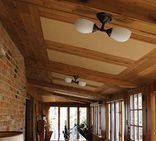 Soundproof Ductwork and Vents
Soundproof Ductwork and Vents
How to Soundproof Ductwork in Your Home
If you’re wondering how to soundproof HVAC systems, start with ductwork. Ductwork is not something a duck does at an office — it’s an essential part of your HVAC system. Noisy pipes moving air through your home can ruin the moood you’re trying to create.
Soundproofing starts with identifying the sounds and their sources. For example, when you turn on the heating, furnace ducts pop the metal expands. Extra insulation solves this problem. Soundproofing ducts is a temporary fix for older units until you replace the HVAC system.
Some noises are solved with repairs, but others require creative solutions. Here are techniques to lessen ductwork noise and improve acoustics in your home.
1. Repair Ductwork
Before soundproofing ductwork, check if it needs service or replacement. Installing soundproofing on an HVAC system you’re replacing will only double your efforts.
Common ductwork issues include:
- Dirty ductwork: Dust gathers in the pipes. Hire a professional or clean the pipes yourself.
- Leaky ducts: Compromised seals may cause noisy ducts. Tighten loose fittings or patch holes with duct tape.
- Poor insulation: A lack of proper insulation causes air to escape and adds to noisiness. Check your ductwork is well-insulated.
- Old or faulty ductwork: Replacement may be necessary for old or faulty ductwork.
2. Decide Between Soundproofing or Sound-Absorbing Materials
If you want to reduce noise from another room, use soundproofing materials. Soundproofing is the perfect option for quieting noisy ductwork. Soundproofing solutions include:
- Heat-resistant soundproofing wrap limits noise when wound around pipes.
- Adhesive sound-dampening material prevents the sound of air vibrating through ducts.
- Industrial sound-deadening material sheets are ideal for reducing noise in heat ducts.
Sound-absorbing material dampens noise in the room you’re in. The material makes it easy for sound to get in but hard for it to escape. Examples of sound-absorbing options are:
- Acoustic foam decreases ambient noise.
- Acoustic cotton eliminates echo while minimizing sound transfer.
- Flame-resistant fabric-covered foam diminishes air noise.
3. Use Liners for Ductwork Sound Insulation
Lining the interior of your ductwork acts as a silencer. It adds insulation to make the system more efficient while diminishing sound. Using heat-resistant acoustic foam in the interior of your ducts is a low-cost way to decrease resonance. The foam absorbs sound energy and stops it from moving into other rooms.
4. Choose Flexible Ductwork to Reduce Noise
Like yoga, flexibility is best when it comes to ductwork! If you need to replace ductwork, install flexible ducts for noise reduction. The curves in these ducts outsmart the sound, keeping it from traveling in a straight line. But don’t tear out your existing ductwork to do this. Fitting soundproofing to existing ducts is less complicated (and costly) than replacing ducts.
5. Use a Duct Silencer to Prevent Sound Travel
Inserting a sound baffle is an effective means of ductwork sound insulation. Baffled? Don’t be! A baffle or sound maze absorbs and blocks noise. With plywood and soundproofing foam, you can create bends in a straight pipe that acts like a flexible duct without leaks. When sound travels around the curves, the foam absorbs some of it, lessening its intensity. Try making one yourself or trust an expert to do it for you.
Contact us for advice on mooovelous pipe-soundproofing solutions for your home!
How to Soundproof Air Vents in Your Home
Stand-alone vents provide fresh air from outside while others transport it around the house through the HVAC system. Soundproofing noisy vents does not have to be a moood-killer!
1. Repair the Air Vents
It’s normal to hear some noise from your home’s vents. The trick is differentiating between normal sounds and those that require attention.
Typical air vent issues can be solved as follows:
- Blocked vents: Inspect vents and remove any obstructions causing pressure buildup.
- Outdated air filters: For optimal performance, replace air filters every 90 days.
- Motor problems: Rattling or humming in the HVAC system may indicate a faulty motor. This problem requires professional repair.
- Dirty vents and ducts: Cut down on noise with regular cleaning.
2. Remove the Vent
Removing a loud stand-alone vent may solve your problem. Unfasten the vent from the wall and fill the gaps on both sides with sheetrock or drywall. Apply adhesive to seal the area around the vent so that it blends into the wall.
3. Apply an Acoustic Sealant
Acoustic caulk is made from a special sound-reducing material. The foam sealant expands to fill the surface and creates an airtight barrier. You can sand and paint it to match the existing wall. If you want to fill the whole duct with acoustic sealant, get enough insulation to fill the space.
4. Use Vent Covers to Dampen Sound
Installing a magnetic soundproof vent cover is an alternative to removing the vent. The lack of airflow through the vent quiets the room. To prevent mold growth, remove the magnetic covers and ventilate the room.
It’s important to note you should only use this solution on one or two vents throughout your home. Closing off vents in hardly used rooms can improve HVAC system efficiency. However, covering more than two vents can cause pressure to build in the ducts.
5. Plug Vents With Acoustic Foam
Acoustic foam reflects sound waved at the source to cut ambient noise. Using this foam on vents gives the sound a place to go and keeps it there. You can cut two pieces of acoustic foam to size and bond them together using spray adhesive. The foam is placed between the air vent and duct to seal them.
Check out our range of HVAC soundproofing products to keep your vents and ducts whisper quiet.
Products Available at Soundproof Cow to Help Soundproof Your HVAC
You don’t have to keep your HVAC system turned off to live in a quiet home. We have the products you need to soundproof the unit and ductwork. The excellent news is, you don’t require installation experience for many of these products. If you can peel off a sticker from a piece of fruit, you can install many of our adhesive-backed products.
1. Quiet Wrap™ Pipe Soundproofing Wrap
Pipes around your home can be a significant source of the noise. Wrapping Quiet Wrap™ Pipe Soundproofing Wrap around them can reduce this noise, but did you know this wrap also works well for air ducts? With heat resistance up to 140 degrees Fahrenheit, you can use this around both heating and cooling ducts.
2. RoadBlockR SoundDeadening Material
A surprising material to use for soundproofing your HVAC system is a product designed for use in cars. Thin and easy to install, RoadBlockR Sound Deadning Material has an adhesive backing with aluminum-covered butyl on the front. Because this lightweight peel-and-stick sound-dampening material usually blocks the noise from road vibrations around your car, it excels at stopping the sound of air vibrating through your ducts.
3. VibraBlock
With VibraBlock Sound Deadening Material Sheet, you can achieve heating duct noise reduction with less material. Though it’s only 0.04 inches thick, this industrial-grade material works hard to deaden sound. You only need 60% of the surface covered with VibraBlock to achieve the same effect as covering the whole surface with standard sound-dampening sprays.
4. Udderly Quiet Fabric-Covered Foam
Lining your ductwork with Udderly Quiet Fabric-Covered Foam helps reduce noise from the air in your HVAC system without risking a fire. With thicknesses ranging from one to three inches, you will find the right level of sound deadening to fit inside the ducts.
This foam works well inside ducts because it is highly sound-absorbent and fire-resistant. It also deters mildew that could form in the warm, humid environment of furnace ductwork. In addition to providing sound-dampening benefits, this foam can insulate your ducts, making your HVAC system more efficient by reducing leaks of heated or cooled air.
5. Quiet Barrier®
Apply versatile Quiet Barrier® Specialty Composite almost anywhere you need soundproofing. Combine acoustic foam with Quiet Barrier® LD for maximum sound dampening. This material works in the harshest environments thanks to its ruggedness. If you have a thunderous air conditioner that you need to quiet, apply the composite around the unit or ducts.
Make Your Home More Livable With Soundproof Cow
If you want to silence that noisy HVAC system, mooove on over to our website and browse our range of soundproofing products. While our jokes may be cheesy, you won’t have a beef with our products or prices. Let us help you create a quiet, livable space you will want to relax in until the cows come home!
 Soundproof Other Areas
Soundproof Other Areas

I just wanted to send a quick thank you for your rapid response and helpfulness. I very much appreciated it. You have been responsive in every way all through the process. It has been a pleasure doing business with you and your company.
- T. Alexander

